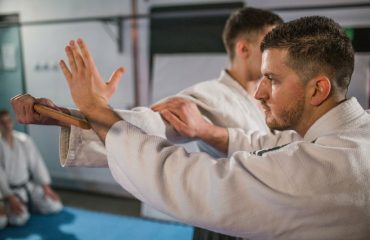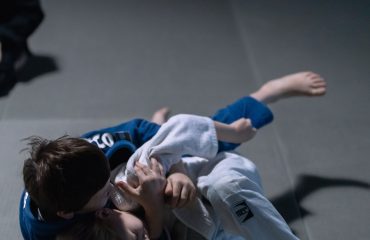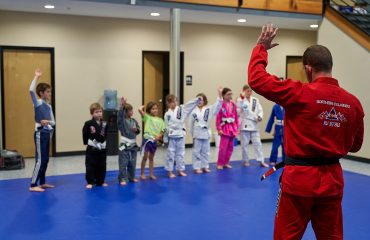
In the world of martial arts, few disciplines are as challenging and rewarding as Jiu-Jitsu. At Noco Jiu-Jitsu and Self-Defense, we understand the passage through the ranks of Jiu-Jitsu belts is more than just a progression in skill—it’s a path of personal growth, discipline, and community. This comprehensive guide is designed to illuminate the significance of Jiu-Jitsu belts, providing insights for both newcomers and seasoned practitioners alike.
Understanding the Jiu-Jitsu Belt System
The belt system in Jiu-Jitsu is a method of signifying a practitioner’s skill level, experience, and knowledge. It’s a voyage that starts with the white belt, symbolizing a blank slate or a beginning, and progresses through a series of colors. Each belt is not just a marker of skill; it represents a phase of learning and personal development.
The progression through the belts is not just a linear path of accumulating techniques and skills. It’s a holistic process that involves mental, physical, and emotional growth. In Jiu-Jitsu, the color of the belt worn by a practitioner is a quick reference to their level of expertise, but more importantly, it’s a reflection of the time, effort, and dedication they have invested in their training. The belt system serves as a structured framework within which students can set goals and measure their progress, offering tangible milestones in their martial arts adventure.
Furthermore, the belt system fosters a sense of community and mutual respect among practitioners. In Jiu-Jitsu, higher belts are often seen as mentors and role models, sharing their knowledge and experiences with those who are newer to the art. This mentorship is a vital part of the learning process, as it helps to create a supportive and collaborative training environment. At each belt level, students are not only expected to develop their skills but also to contribute to the growth of their peers, reinforcing the core values of respect, humility, and camaraderie that are central to Jiu-Jitsu culture.
The White Belt: A Fresh Start
Every Jiu-Jitsu practitioner’s adventure begins with the white belt. This stage is all about building a foundation. At Noco Jiu-Jitsu and Self-Defense, we emphasize the importance of mastering the basics at this level. Patience and perseverance are key, as the fundamentals you learn here set the stage for your future progression.
The white belt phase is not just about learning moves; it’s about cultivating the right mindset and attitude toward learning and growth. It’s a period where one learns to embrace challenges, understand the value of resilience, and build a strong mental and physical discipline that serves as the cornerstone of their martial arts adventure. In this phase, students are encouraged to focus on consistency, respect for the discipline, and an openness to continuous learning. It’s where the seeds of a lifelong passion for Jiu-Jitsu are sown, nurtured by the supportive environment at Noco Jiu-Jitsu and Self-Defense.
The Blue Belt: Developing Skills
Earning a blue belt is a significant milestone in Jiu-Jitsu. It marks the transition from beginner to intermediate practitioner. At this stage, students begin to refine their techniques and develop a deeper understanding of the art. The focus shifts from mere participation to active exploration of Jiu-Jitsu’s vast landscape.
This is a period of intense learning and growth, where students at Noco Jiu-Jitsu and Self-Defense are encouraged to challenge themselves and push beyond their comfort zones. The blue belt experience is characterized by a deeper immersion into the strategic aspects of Jiu-Jitsu, encouraging students to start thinking critically about their movements and choices on the mat. This is also a time for building resilience and mental toughness, as practitioners face increasingly complex challenges and learn to adapt to a variety of styles and techniques. The blue belt stage is pivotal, setting the tone for the practitioner’s future growth and achievements in Jiu-Jitsu.
The Purple Belt: Deepening Knowledge
The purple belt is where the art of Jiu-Jitsu starts to unfold. This stage is about deepening your understanding and starting to develop your unique style. Purple belt practitioners at Noco Jiu-Jitsu and Self-Defense are encouraged to experiment with different techniques and start to understand the finer nuances of the art.
It’s a phase marked by significant personal and technical growth, where students begin to see the interconnectedness of techniques and strategies. This belt is often seen as a turning point; practitioners develop a more analytical approach to their training, learning not just how to perform techniques, but why they work. They are taught to think critically about their moves and positions, leading to a more strategic approach to sparring and competition. The purple belt adventure is one of exploration and discovery, as students start to forge their path in the Jiu-Jitsu world, building on the solid foundation laid in the earlier stages of their training.
The Brown Belt: Refinement and Mastery
As a brown belt, a practitioner is recognized as an advanced student of the art. This phase is about refinement and mastery of techniques. Brown belts are expected to have a comprehensive understanding of Jiu-Jitsu and begin to take on leadership roles, often assisting in teaching lower-ranked students.
At this stage, the exploration becomes introspective, focusing on fine-tuning skills and understanding the deeper philosophies and strategies of Jiu-Jitsu. Brown belt holders at Noco Jiu-Jitsu and Self-Defense are seen not just as students but as emerging mentors and role models within the community. This belt represents a critical transition period where one’s skills are honed to near perfection, and a higher level of tactical and technical acumen is developed. It’s a time for self-reflection and preparation for the ultimate goal of achieving the black belt, where the practitioner not only masters the art but also embodies the virtues and responsibilities that come with being a Jiu-Jitsu expert.
The Black Belt: Mastery and Beyond
Achieving a black belt in Jiu-Jitsu is a monumental achievement. It signifies a high level of proficiency and an in-depth understanding of the art. However, the adventure doesn’t end here. Jiu-Jitsu is a lifelong pursuit, and black belts continue to learn, grow, and contribute to the art.
This prestigious rank is not merely an endpoint but a new beginning. Black belt holders are seen as mentors and leaders in the Jiu-Jitsu community. They carry the responsibility of not only honing their own skills but also nurturing the growth of lower-ranked students. At Noco Jiu-Jitsu and Self-Defense, our black belts embody the highest values of the art—integrity, respect, and continuous improvement. They are expected to lead by example, demonstrating the same dedication and spirit they showed throughout their own experiences. The black belt is a testament to years of dedication, but it’s also a reminder that in Jiu-Jitsu, there is always more to learn, more to teach, and more ways to grow both on and off the mat.
The Significance of Jiu-Jitsu Belts
Jiu-Jitsu belts are more than just indicators of skill level; they are symbols of dedication, perseverance, and personal growth. Each belt represents a different stage in the adventure, with its own challenges and rewards. At Noco Jiu-Jitsu and Self-Defense, we believe that the progression through the belts is a profound process that goes beyond physical skills. It’s about developing character, discipline, and a deep respect for the art and the community.
Additionally, these belts serve as a visual reminder of the passage and the time invested in honing one’s abilities. They are a testament to the sweat, determination, and occasional setbacks faced and overcome. As students advance through the ranks, they not only improve their physical capabilities but also imbibe lessons in humility, patience, and resilience. This personal evolution is what makes Jiu-Jitsu a deeply fulfilling martial art, where the color of the belt wrapped around your waist is a badge of honor, reflecting your path, struggles, and triumphs both on and off the mat.
The passage through the Jiu-Jitsu belt is a rich and rewarding path. It’s a process that shapes not just fighters, but individuals of strong character and discipline. At Noco Jiu-Jitsu and Self-Defense, we are committed to guiding our students through this path, ensuring that they gain not just technical proficiency but also life skills that extend beyond the mat. Whether you’re a seasoned practitioner or just beginning, understanding the significance of each belt can enhance your appreciation of the art and fuel your passion for learning. Contact us for more information.
Frequently Asked Questions:
- What does each color of the Jiu-Jitsu belt represent?
- White Belt: This represents the start of your Jiu-Jitsu adventure, focusing on learning the fundamentals.
- Blue Belt: This signifies a transition to the intermediate level, where refining techniques and understanding of the art deepens.
- Purple Belt: Marks a phase of deepening knowledge and developing a personal style in Jiu-Jitsu.
- Brown Belt: Indicates advanced proficiency, focusing on refinement, mastery, and leadership.
- Black Belt: Symbolizes a high level of skill and understanding, and the beginning of a lifelong pursuit of learning and teaching in Jiu-Jitsu.
- How long does it typically take to progress from one belt to the next in Jiu-Jitsu?
The time to progress between belts can vary greatly and depends on several factors like the frequency of training, individual aptitude, and the standards of the training school. It’s common for practitioners to spend several years at each belt level.
- Is the belt system the same in all Jiu-Jitsu schools?
While the belt system is generally consistent across different Jiu-Jitsu schools, the criteria for progression and the emphasis on certain aspects of training can vary. Schools like Noco Jiu-Jitsu and Self-Defense may have their unique approach to grading and progression.
- Can a practitioner skip belt levels in Jiu-Jitsu?
Skipping belt levels is quite rare in Jiu-Jitsu. The passage through each belt is seen as crucial for the development of skills, knowledge, and character.
- What are the most important qualities a practitioner should develop at the white belt level?
At the white belt level, the focus should be on developing patience, perseverance, and a solid foundation in the basic techniques of Jiu-Jitsu.
- How does one prepare for belt testing in Jiu-Jitsu?
Preparation for belt testing usually involves regular training, learning the required techniques for the next level, and often, demonstrating proficiency through sparring or specific drills. Guidance from instructors at schools like Noco Jiu-Jitsu and Self-Defense is crucial.
- What role do higher belts play in the Jiu-Jitsu community?
Higher belts often take on leadership and mentoring roles. They assist in teaching lower belts, contribute to the overall learning environment, and uphold the values and traditions of Jiu-Jitsu.
- Is achieving a black belt the ultimate goal in Jiu-Jitsu?
While achieving a black belt is a significant milestone, it’s not the end of the adventure. Jiu-Jitsu is a lifelong pursuit, with learning and personal development continuing well beyond achieving the black belt.
